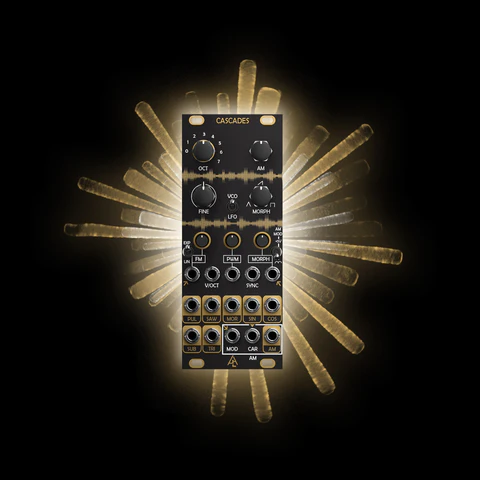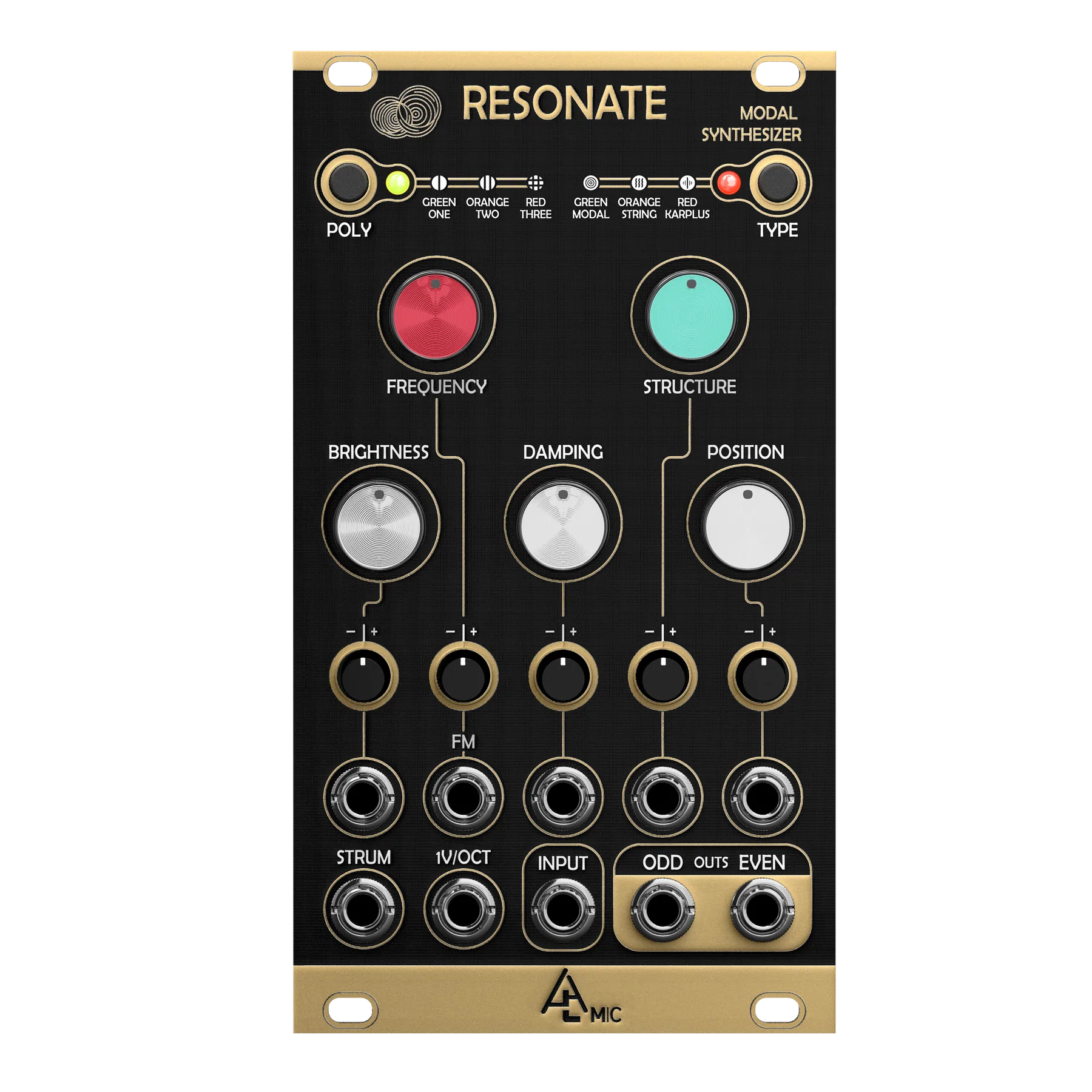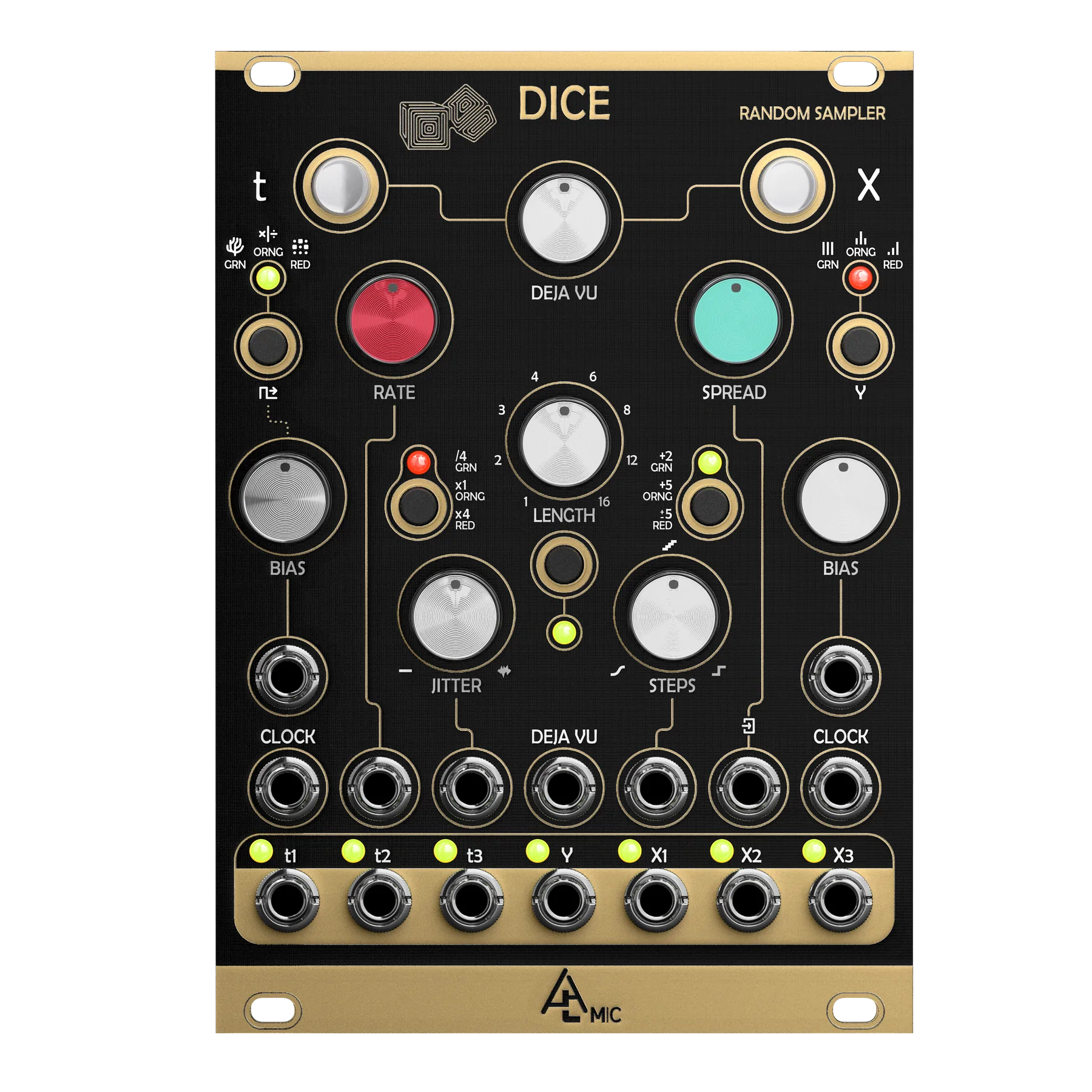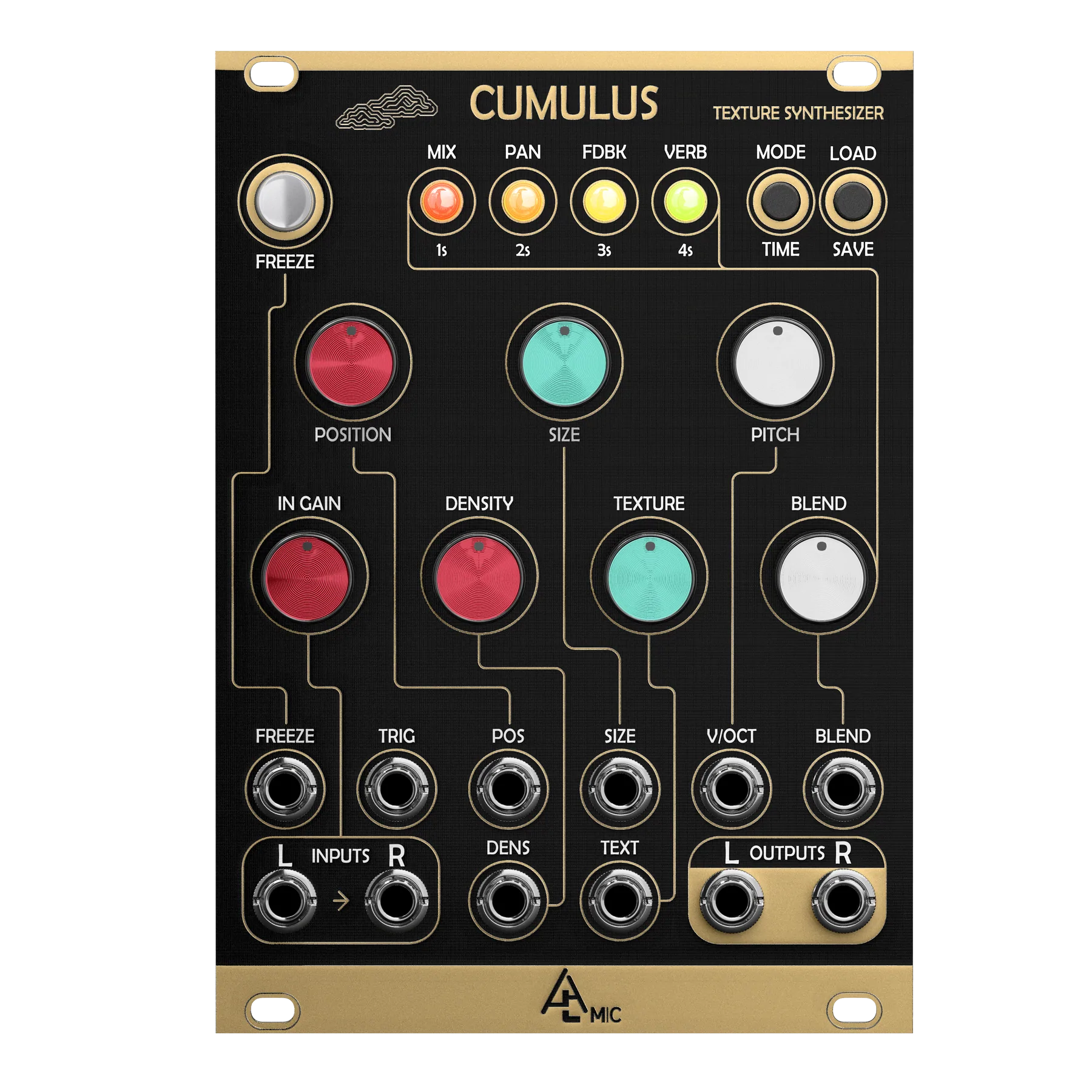Module makers Lenny and Clarissa are making a name for their After Later Audio line. Up for fall: all the best bits of a complex oscillator made more modular, and a growing line of reboots of now-discontinued Mutable Instruments modules.

Coco series complex oscillators
It’s a good time for Eurorack oscillators, especially West Coast-style oscillators. In addition to that Befaco Pony through-zero / wavefolding module, After Later has unveiled a series of modules inspired by the complex oscillator – that’s the class of oscillators with integrated modulation inspired by Buchla’s 259 and 261 “Twisted Waveform” and “Complex Waveform Generator” modules. (See the current-gen 259e and 261e.)
Complex oscillators’ biggest advantage – lots of wild built-in modulation and out-there sounds – can also be their downside. These modules, as After Later points out, tend to take up a lot of space and be fairly fixed and rigid. Take a look at the Buchla modules, and one of the first things you’ll notice as you look past all the tasty knobs and such is what they don’t have is a lot of patch points.
The COCO series is different. It divides up the complex oscillator into separate modules, so you can mix and match what you want in your rig. And – partly by getting rid of any honking-enormous Buchla dials – they’ve managed to cram in a ton of patch points. You can do a lot with a simple patch, but you can also use these in more ways.
Dividing them up into modules isn’t necessarily a play to get you to buy more, either – each sends and receives exponential FM, sync, and MOD wave signals. Plus while this is pitched as a “create your own complex oscillator” series, you could certainly add-in other similarly themed modules from other makers – the Befaco being just one recent example.
Here’s the breakdown:

Cascades: full-blown through-zero oscillator with wave-shaping, amplitude modulation, and just a boatload of waveform outputs. You could certainly be happy with just this one.
Brooks: 4HP basic VCO that here they recommend as a modulation oscillator (though I can also see cramming this one into another rig)
Valley: Wavefolder (for upper harmonics) with a lot of options. (They have the grittier Dirty Laundry and describe this as the clean one… which makes me feel they missed the opportunity to call this Dry Cleaner or something.)
Canyon: Sub-harmonics / lower harmonics.
SUM+INV is a 3:1 mixer with inverted options, which means you also have a utility for 0 / 90 / 180 / 270-degree phase.
I also like After Later’s new, refined panel look. I’d honestly ignored a lot of big, overthought modules that have hit the market later – I’m sure they’re good for someone. This by contrast seems perfectly at home natively in a modular format, and something you could use in lots of creative ways over time.
MIC Line
The MIC Line is an exact hardware replica of discontinued Mutable Instruments favorites – though skip ahead, because while these are nice, I’m personally most interested in some of the ones that are variations rather than 1-to-1 recreations.
The first three are due in October, with more following in fourth quarter. That’s good news, as even DIYing stuff now is made more difficult with parts shortages.
Resonate = Rings
Dice = Marbles
Cumulus = Clouds
The new look is black in place of silver:



Open source means more variety
It’s well worth a look through the full After Later lineup, especially if you’re an Intellijel 1U fan – right now, they’ve got as many useful 1U-format modules as anyone short of Intellijel themselves.
While the full-scale Mutable recreations are nice, I’m actually more enthusiastic about some of their alternate-version Mutable options.
Baker and the larger Rainier, based on Mutable Instruments Peaks, add additional CV inputs and attenuverters for inputs plus attenuverters for outputs. (There’s also an ultra-compact Pique, if you prefer.) They’re also preloaded with Dead Man’s Catch firmware which has all the multi-functional magic of the original – it’s an envelope, it’s an LFO, it’s a tap LFO, and it’s a bass/snare – plus even more. Now it’s also got alternate envelope and LFO modes, a mod sequencer, a separate drum with FM drums and hats.
Maybe it’s because I’m still a computer person at heart, but I love all these modules that have multiple functions rather than being stuck as a unitasker.
Threads is all the beauty of Yarns, but fits in a 1U form factor – giving you an SH-101 sequencer, alternative tuning support, monophonic and polyphonic operation, and even its own digital oscillators. All that’s missing is USB support on the Intellijel Palette, but that’s a small tradeoff to make.
All of this has the likes of Schneidersladen adding more imports. (For Europe, I’ve also had great luck with Elevator Sound. If you’re outside of the EU and don’t have to worry about Fortress Europe imports, there are plenty of options – including buying direct and various resellers.)
Their embrace of nerdy and open source designs is not limited to Mutable, either. You’ll find Turing Machine recreations and expander support (with permission from Tom Whitwell), and the most recent version of the Benjolin by the late Rob Hordijk. (I deeply regret not writing a full obituary as I was juggling health issues; expect a late tribute.)
Speaking of multiple functions, they also do Ornament and Crime.
Oh yeah, and check some “fun with utilities” – also in a 1U format, though with this width that can let you sort of craft your own modular-inside-a-module-space, with an adapter from XODES.
Not surprisingly, I’ve seen Schneidersladen just announce they’re focusing on the After Later recreations for people seeking out Mutable Instruments designs. It’s great to have a boutique, small builder, in the spirit of the original – and the price is still reasonable.
Check out their full range:
https://afterlateraudio.com/collections/eurorack-modules
And I’m glad to see in-the-EU distribution, since I had to seek out this stuff and figure out how to import it when I couldn’t wait for Threads and Baker (playing with them now, though)!